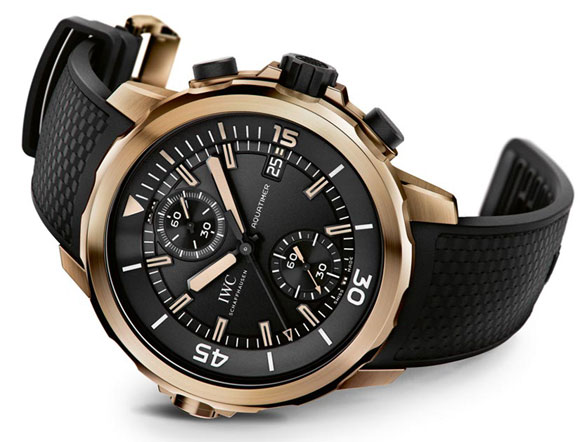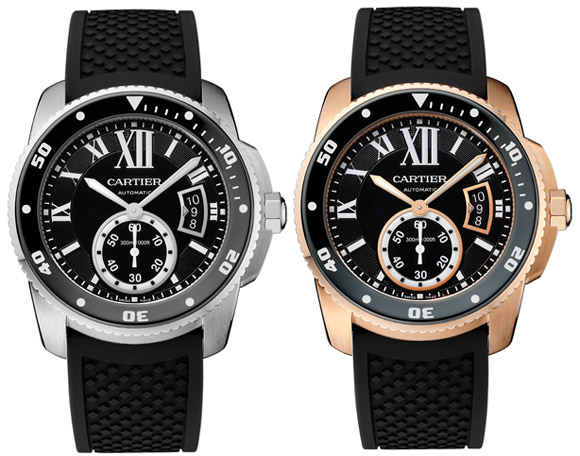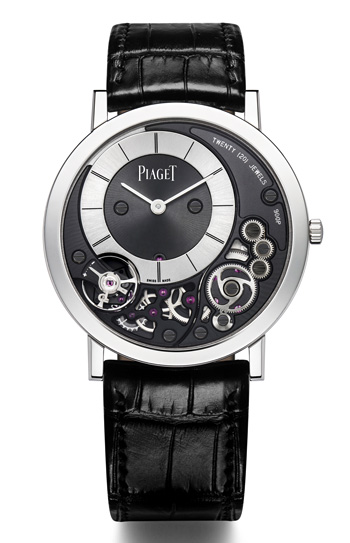It seems unwise to attempt a summary of SIHH in one word. But I’m going to anyway. The word I’m going to use is ‘sensible’.
I know. Describing the world’s most indulgent watchmaking event (Basel’s commercial feel relegates it to a close second) as you might the social life of an accountant sounds a bit gauche. But I can explain.
Firstly, the rocket-fuelled prices of 2013 were nowhere to be seen. No €1.92m watches from Lange. No $1.6m all-sapphire cases from Richard Mille. Some pricey stuff, sure, but not at those astronomical levels.
Likewise, ego seemed more in check. No F1 cars. No crouching golden eagles. Even Baume & Mercier had reined in its indulgent ‘life’s a beach’ Long Island mansion theme, preferring a mature, upstate New York look for its stand instead.
Some of the best watches from the fair proved the point. Here are four.
IWC Aquatimer Chronograph Edition ‘Expedition Charles Darwin’

I’m aware that by going with IWC’s 80s-inspired giant first there’s a chance I’m going to contradict my own argument before I’ve started. But for all that it’s a big bronze diver’s watch, with a design that’s split the critics, the overhauled Aquatimer is a logical, straight-talking timepiece.
Take the SafeDive bezel. When IWC’s Creative Director Christian Knoop described it to me over the phone before SIHH, I wasn’t completely sold. It sounded unnecessary, fussy even, which isn’t something you could normally say about IWC. But in the flesh it’s absolutely brilliant. It’s beautifully engineered, easy-to-use, and, as Knoop said, gives IWC’s iconic diver’s watch a USP that makes it very marketable.
On reflection, the standout among the nine versions launched is the 44mm bronze Charles Darwin model. Bronze is still novel enough to catch the eye, and in this case IWC has found an alloy that it claims is 50 per cent harder than the bronze used by other brands (while not naming any, mind).
The price is sensible, too. In the UK, it will be £8,250. Compare that with the Portuguese Chronograph Classic launched last spring, which has a steel case and IWC’s in-house Calibre 89361 compared to the Darwin’s in-house Calibre 89365, and which retails for £9,950, and you have a watch on your hands that begins to look good value. Not forgetting, of course, that the Darwin is also water-resistant to 300 metres and has the new and very efficient quick-change strap system.
Baume & Mercier Clifton Chronograph

As I’ve said on WorldTempus before, Baume et Mercier is splitting its loyalties squarely between SIHH and Watches and Wonders these days, and that two of the three showcase pieces unveiled by the brand in January were first launched in Hong Kong last September.
One of those was the 43mm stainless steel Clifton Chronograph, which to my mind has all the qualities required to be a serious contender. It’s a mid-range Valjoux 7750-based chrono that’s going to retail for £2,650, a price chosen so that it slots between the Longines Masters and TAG Heuer Carreras of this world. That puts it at a price point that, the brand hopes, will tempt some consumers to spend more, and others less. Which has the makings of a sensible, if not super-smart strategy.
I can see the chrono doing both. It’s retained the handsome mid-century looks that made last year’s Cliftons so talked about. And added to that, the Baume & Mercier brand is rising steadily (if unspectacularly), offering watch buyers a credible alternative to the mainstream players. Keep up the good work, Baume & Mercier.
Cartier Calibre de Cartier Diver Watch

Returning to the diver theme, I was also impressed by Cartier’s toe-dip into the world of frogmen watches. Cartier, as you might rightly point out, is not known for its diver’s watches, and the notion of it bridging the gap between the Rue de la Paix and the deep might seem a stretch. But it isn’t. And that’s because the new watch is very Cartier, and because it has the spec of an authentic dive watch.
Aesthetically, it bears the same hallmarks as the Calibre de Cartier Automatic, launched in 2010, right down to the brand’s signature Roman numerals and sapphire cabochon set into the crown. It’s also powered by the same Cartier in-house 1904 MC calibre.
The change-up is in the addition of a black ADLC uni-directional rotating bezel and a black rubber strap, and in that it’s now water-resistant to 300 metres and complies with the ISO 6425 diver’s watches standard. That covers its bezel; running indication and legibility; magnetic, shock and chemical resistance; strap durability; and resistance to water and pressure.
What’s particularly refreshing about the watch is that it isn’t a lumbering hunk of metal. At 11mm, the Diver Watch is only 1mm thicker than the standard automatic, despite being 10 times more water-resistant. That’s impressively thin for a proper underwater watch and makes it one of the most versatile, sensible diver’s watches currently on the market.
Piaget Altiplano 900P

I must admit, this is an odd choice to back up my argument. Piaget’s Altiplano 900P slipped into the record books at SIHH as the world’s thinnest mechanical watch. At 3.65mm deep, it trumps Jaeger-LeCoultre’s 4.05mm Master Ultra-Thin Jubilee by a margin – 0.4mm is miles in this business.
It’s odd because as much as if not more than any other complicated approach to watchmaking, thinness is unnecessary. Do we really need these emaciated slivers of watchmaking savoir-faire? The obvious answer is no, we don’t.
But actually I think we do.
The brands at the vanguard of skinny watches are pushing the limits of possibility. They are ambitious and pioneering. They are to telling the time what Usain Bolt is to running about, capturing our imagination by proving we can always go faster, do more, be better. That’s a sensible aspiration for any watchmaker (and if that doesn’t earn me a place in Pseuds Corner, I don’t know what will).
Piaget has starved its new watch by removing the baseplate and using the inside of the case back to hold movement parts, and by cornering the dial into half the display area. Servicing it could prove interesting, but in the mean time, it’s shown the race to go thinner and thinner is not yet won.
So, there you are. Four sensible watches. I think I’ve made my point.








